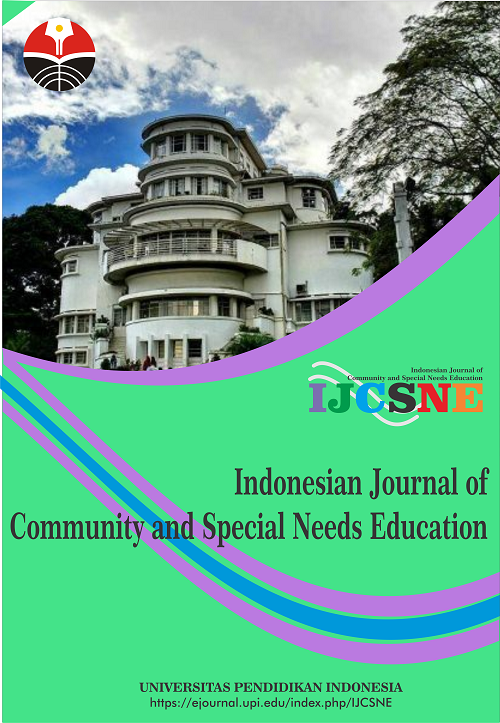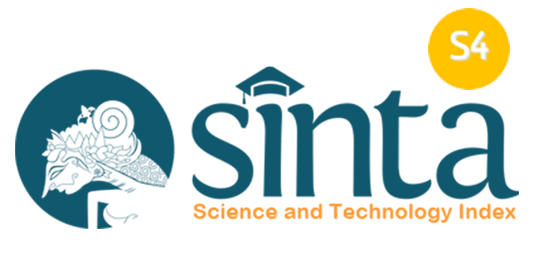Psychological Study of Stress Levels among Secondary School Students with Albinism in Tanzania
Abstract
Keywords
Full Text:
PDFReferences
Akande, J. A., Olowonirejuaro, D. A. O., and Okwara-Kalu, D. C. E. (2014). A study of level and sources of stress among secondary school students. IOSR Journal of Research and Method in Education, 4(5), 32–36.
Bryant, S. E., and Malone, T. I. (2015). An empirical study of emotional intelligence and stress in college students. Business Education and Accreditation, 7(1), 1–11.
Butto, N. (2019). Four phases of life and four stages of stress: A new stress theory and health concept. International Journal of Psychiatry Research, 2(6), 1–7.
Desamparado, C. G., Mendoza, S. J., Minguito, T. K., and Moneva, J. C. (2019). Stress levels among the senior high school students in practical. International Journal of Scientific and Research Publications (IJSRP), 9(1), 463-475.
Godati, M., Bhagyalakshmi, M., and Hemalatha, M. (2015). Emotional intelligence and academic stress among adolescent boys and girls. Eastern Academic Journal, 3, 46-51.
Hassan, A. A., Jantan, R., Redza, M. A., and Fauzi, M. (2017). Level of stress and anxiety and sources of stress among secondary school students. Science International (Lahore), 29(4), 959–963.
Jones, E. (2018). Making practice more affective: Emotional intelligence as a legal meta-competency. European Journal of Current Legal Issues, 24(1), 1-17
Kai-wen, C. (2010). A study of stress among college students in Taiwan. Journal of Academic and Business Ethics, 2, 1–8.
Kauts, D. S. (2016). Emotional intelligence and academic stress among college students. Educational Quest- An International Journal of Education and Applied Social Sciences, 7(3), 149-157.
Kauts, D. S. (2018). Emotional intelligence in relation to stress. MIER Journal of Educational Studies, Trends and Practices, 8(1), 1–16.
Matthieu, M. M., and Ivanoff, A. (2006). Using stress, appraisal, and coping theories in clinical practice: Assessments of coping strategies after disasters. Brief Treatment and Crisis Intervention, 6(4), 337–348.
Mavroveli, S., Jose, M., and Ruiz, S. (2011). Trait emotional intelligence influences on academic achievement and school behavior. British Journal of Educational Psychology, 81(1), 112–134.
Mishra, P. (2012). A Study of the effect of emotional intelligence on academic achievement of Jaipur senior secondary students. International Journal of Educational Research and Technology, 3(4), 25–28.
Mohamed, S., Baqutayan, S., Wahidah, S., Ghafar, A., and Gul, M. (2017). The relationship between stress and emotional intelligence among postgraduate students: The case study at Perdana school, University Technology Malaysia. International Journal of Behavioral Sciences, 11(2), 74–81.
Ndomondo, E. (2015). Educating children with albinism in Tanzanian regular secondary schools: challenges and opportunities. International Journal of Education and Research, 3(6), 389–400.
Oduwaiye, R. O., Yahaya, L. A., Amadi, E. C., and Tiamiyu, K. A. (2017). Stress level and academic performance of university students in Kwara State, Nigeria. Makerere Journal of Higher Education, 9(1), 103-112.
Shahsavarani, A. M., Azad, E., Abadi, M., and Kalkhoran, M. H. (2015). Stress: Facts and theories through literature review. International Journal of Medical Reviews, 2(2), 230-241.
Sharma, S., and Narwal, K. (2018). A study of relationship between emotional intelligence and academic stress of visually disabled students. MIER Journal of Educational Studies, Trends and Practices A, 8(2), 190–196.
Stein, M., Steenkamp, D., and Tangi, S. D. F. (2019). On the way to child rights focused schools–establishing a new inclusive and violence free secondary school in Tanzania. International Journal of Education and Research, 7(11), 71-92.
Vásquez, A. N. V., and Torres, M. P. P. (2020). Internal consistency and validity of the instrument Attachment between parents and newborn children. Enfermería Global, 19(3), 271-285.
Yusoff, M. S. B. (2014). Psychometric properties of the secondary school stressor questionnaire among adolescents at five secondary schools. Journal of Taibah University Medical Sciences, 10(2), 159–168.
DOI: https://doi.org/10.17509/ijcsne.v2i2.50118
Refbacks
- There are currently no refbacks.
Copyright (c) 2022 Universitas Pendidikan Indonesia

This work is licensed under a Creative Commons Attribution-ShareAlike 4.0 International License.















